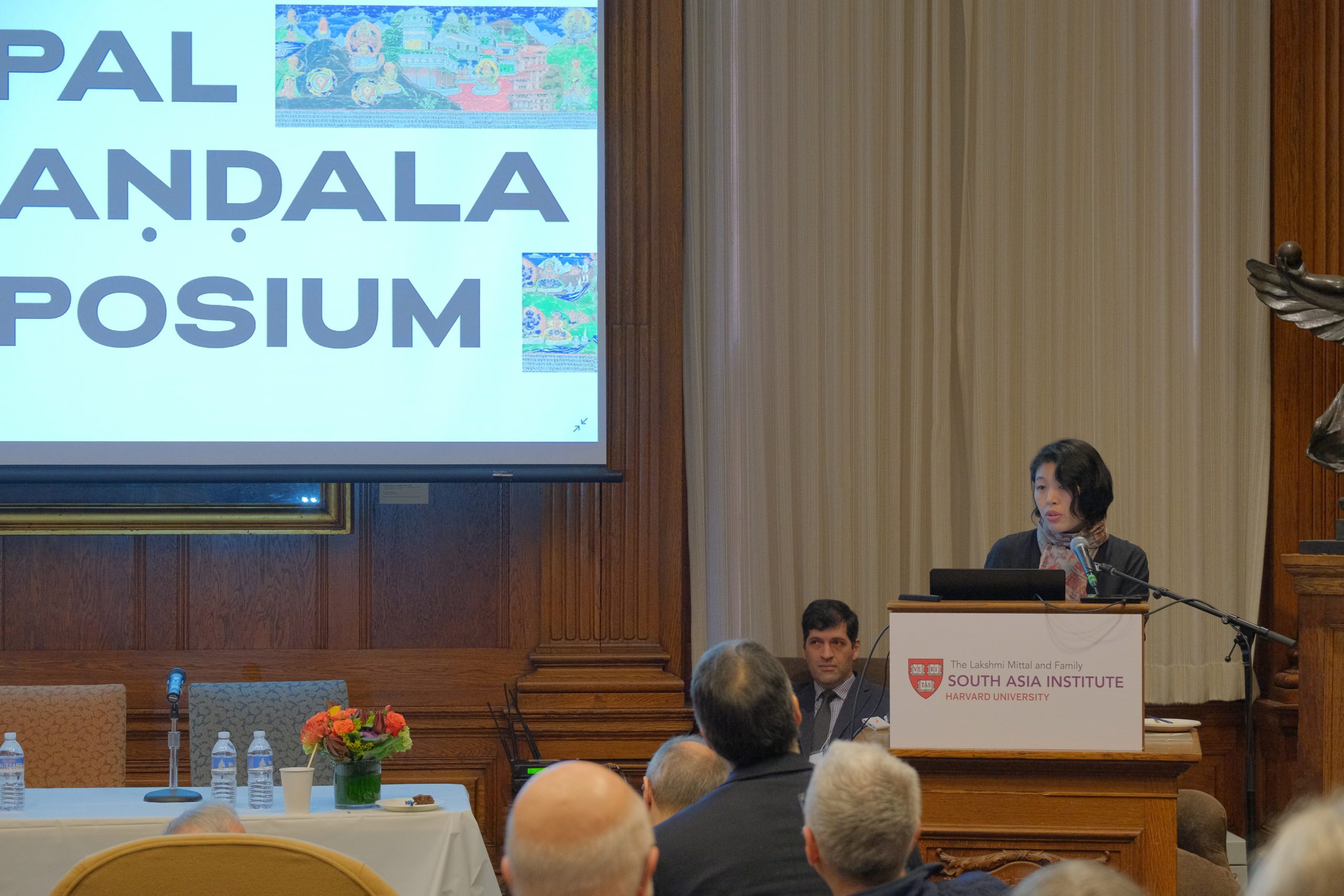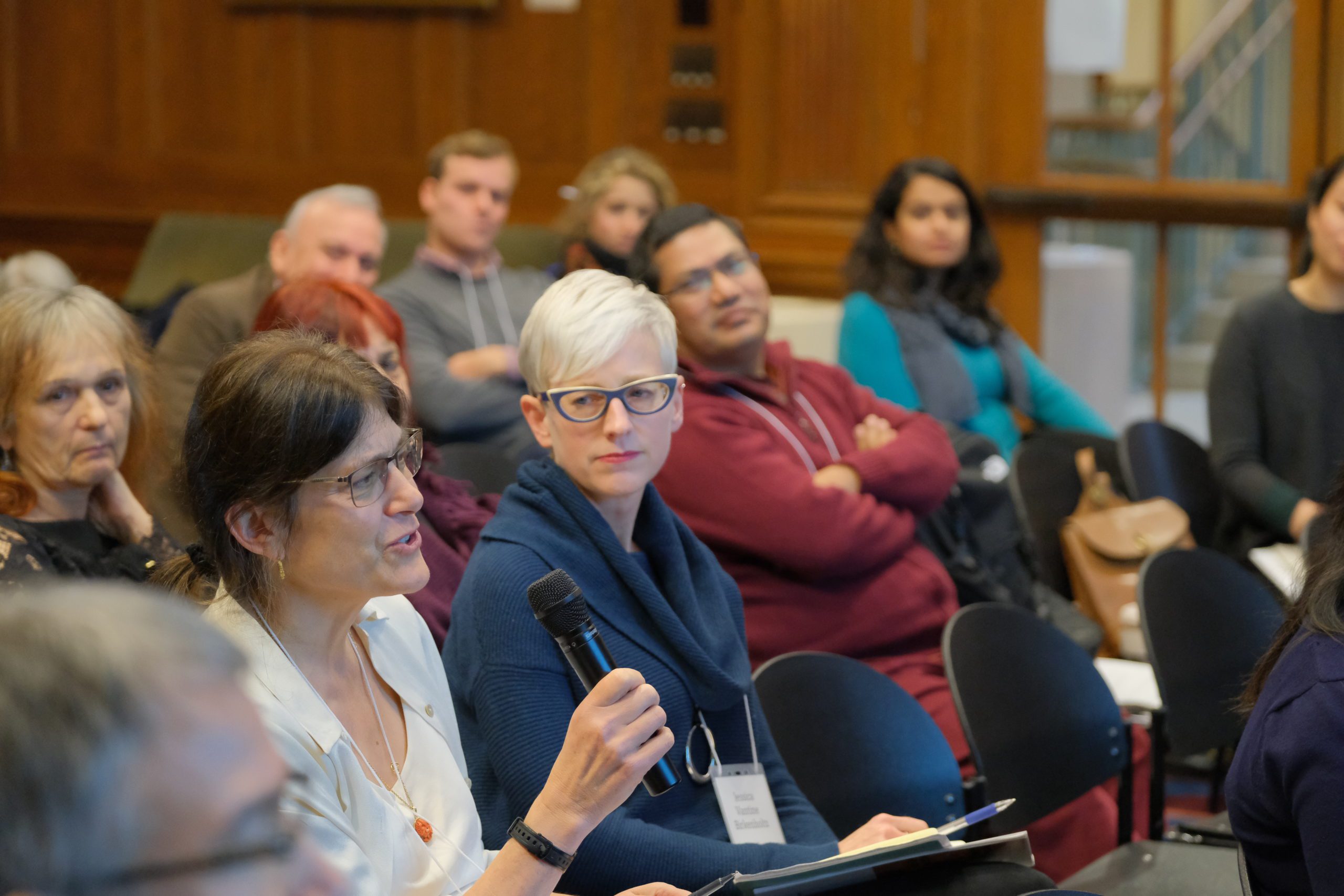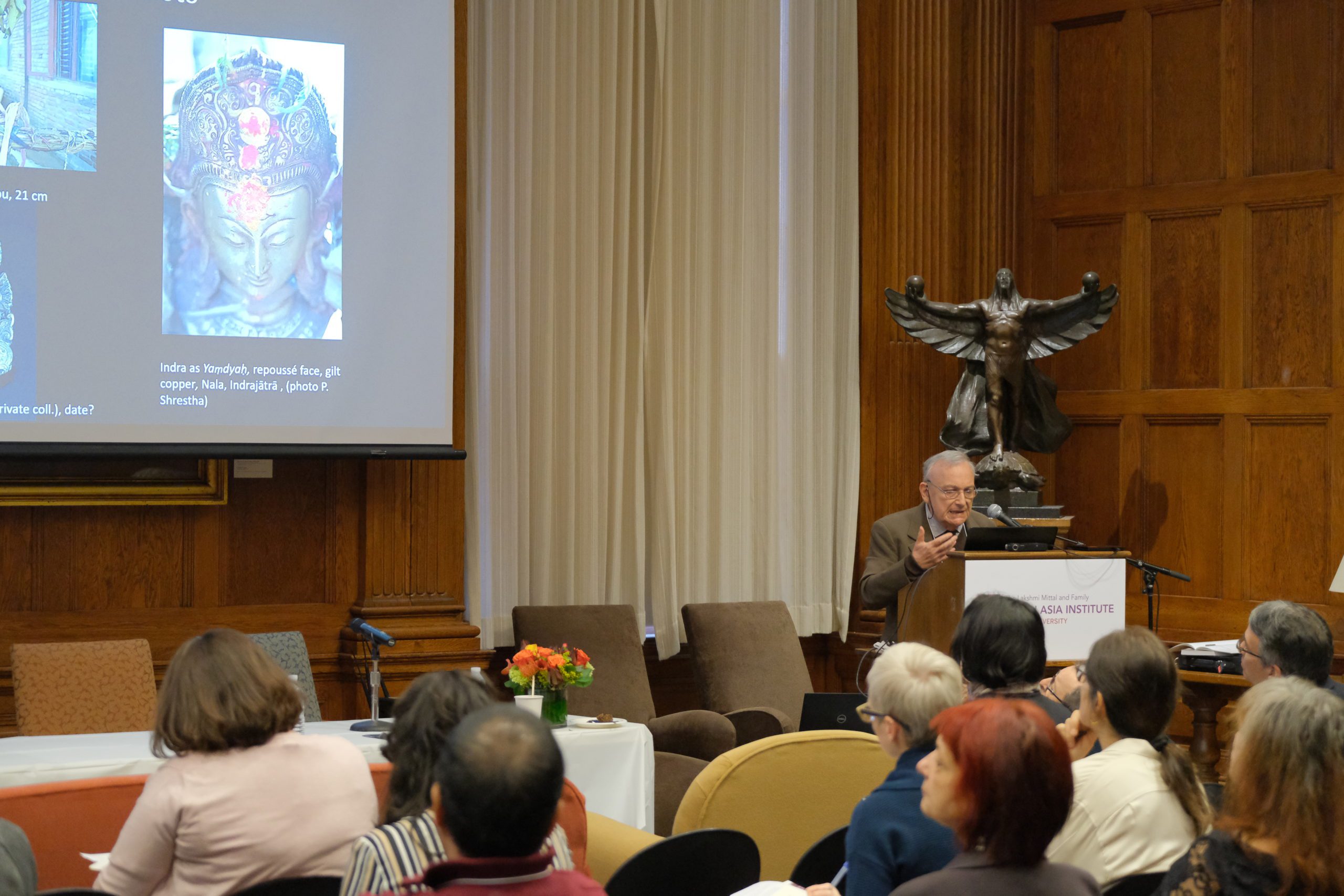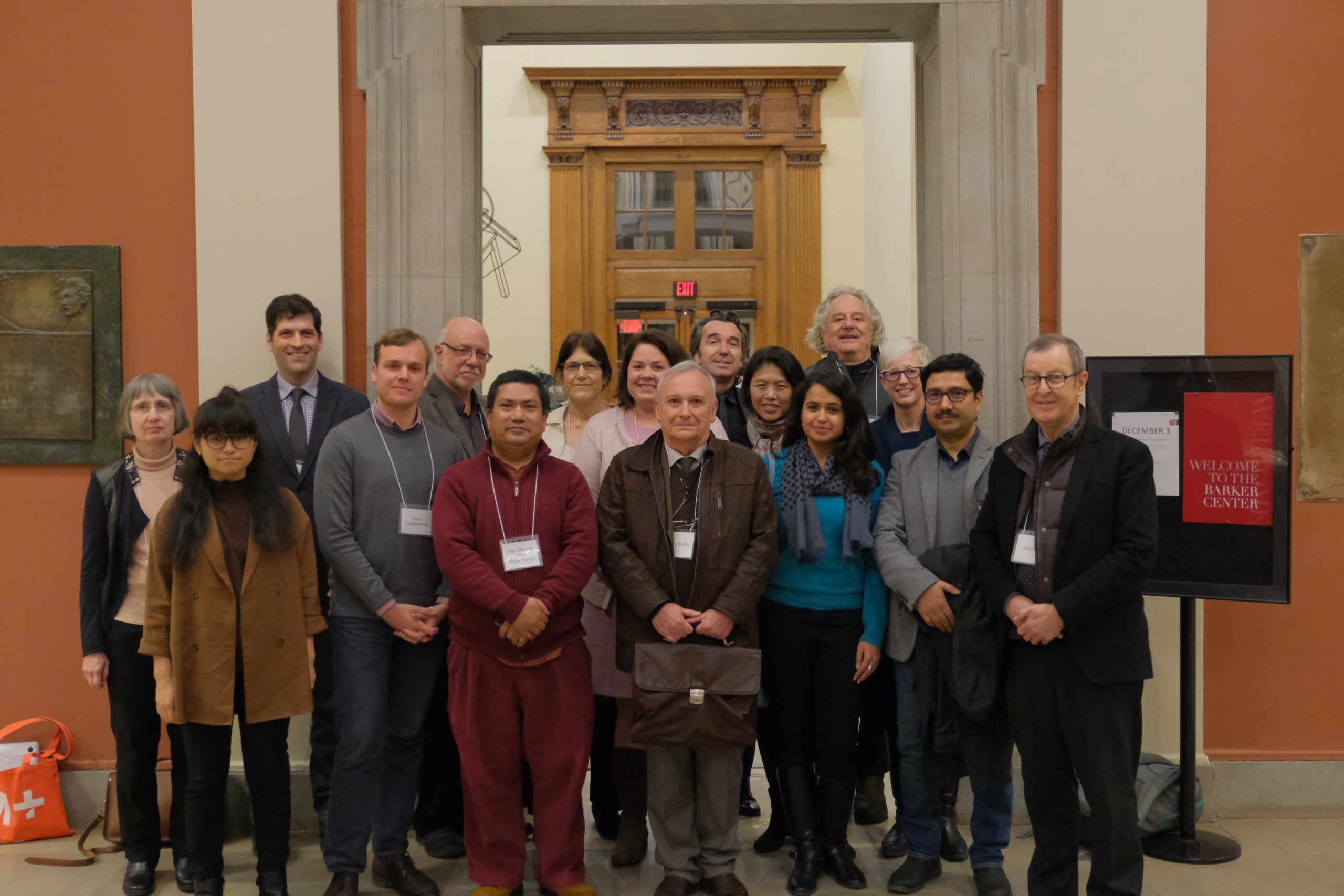
By Louis Copplestone, Harvard University
Symposia dedicated to the art and culture of early modern Nepal come around only once in a generation. And the atmosphere at the Nepal Mandala in an Early Modern South Asia symposium last week, run by Jinah Kim (Harvard University) and Todd Lewis (College of the Holy Cross), reflected the rarity of this meeting. The symposium brought together international experts on the history, culture, and societies of the “Nepal Mandala” — or the Kathmandu Valley — to present papers on the region’s place in early modern South Asia.
Presenters and participants re-appraised the role of this small Himalayan valley in the region, moving beyond popular conceptions of Nepal as an isolated Hindu kingdom, now a secular republic, and beginning to sketch out its place as a center and crossroads of transregional movements. The symposium was developed as a capstone to the exhibition Dharma & Punya: Buddhist Ritual Art from Nepal, on display at the College of the Holy Cross until December 14, 2019.
Reflecting on Buddhist Ritual Art
The symposium began with a keynote conversation between the organizers, Kim and Lewis, who compared notes on their earliest inklings of this exhibition and related the sometimes-fraught process of bringing artworks together from across the country and world. The exhibition includes works from major collections in the United States, including the Museum of Fine Arts, the Metropolitan Museum of Art, the Virginia Museum of Fine Arts, and Harvard Arts Museums, amongst others, as well as a number of specially-commissioned artworks and assembled materials from Nepal. The one-day symposium was spread out amongst four panels.

Nepal Mandala: The Setting
The first panel established the Nepal Mandala as a setting, with presentations from Eric Huntington (Rice University), John Guy (The Metropolitan Museum of Art), and Gerard Toffin (CRNS, Paris) discussing the localization or domestication of earlier materials and ideas in the Kathmandu Valley. Notable here was Toffin’s account of local Newar stories that recast the Hindu god Indra as a cucumber thief, describing him as restrained by the local farmers.
The Early Modern Era
The next panel focused on locating this region into a wider “early modern period,” identified in the symposium with the reign of Nepal’s late Malla kings (15th century CE–1789 CE). Gundrun Buhnemann (University of Wisconsin-Madison), Jinah Kim (Harvard University), and Kerry Lucinda Brown (Savannah College of Art and Design) illustrated this through images of the monkey god Hanuman, enigmatic manuscripts, and large wearable images of the past Buddha, respectively.
The realities of an interconnected Nepal in this period came to the fore in Professor Kim’s examination of a printed manuscript found in a library in Kathmandu that suggests connections between the book industries of Nepal and Ming dynasty China.
The Intra- and Trans-Regional Context
A third panel pushed the intra and trans-regional regional context of early modern Nepal further, bringing in more recent cases. Louis Copplestone (Harvard University) discussed a painted manuscript of the stories related to the Goddess that showed close connections in style and format to painting traditions familiar outside of Nepal.
Jessica Vantine Birkenholtz (Penn State University) explored efforts of localization apparent in a particular Goddess narrative, as Todd Lewis outlined some of the effects that the British Younghusband expedition of 1904-5 to Lhasa, Tibet, had on the Newar community within and outside of the Kathmandu Valley. Dipti Sherchan (University of Illinois at Chicago) closed the panel with a paper on the establishment of the first “formal Western-style” art school in Nepal in the years prior to Nepal’s brief mid-century democratization.

The Nepal Mandala in Global Terms
The final panel of the day addressed the Nepal Mandala in global terms. Ellen Coon discussed cases of deity possession and how it gives voice to Newar women at a time of rapid change in the Valley, notably in response to the “ecological disaster” that the Kathmandu Valley has been witness to in the decades since 1990. Christoph Emmrich (University of Toronto) discussed the poetics and place of jewelry in Newar society on the cusp of change. Emmerich explored a wide range of textual presentations of jewelry, translating the famous Newar folk song Rajamati Kumati to give a new emphasis on the significance and innuendo of jewelry in Newar society.
The final talk of the symposium, given by Bruce Owens (Wheaton College), showed through video and photographs the changes that have taken place in the practice of the Kathmandu Valley’s most famous — and most dangerous — festival, Rato Matsyendranath or Bumgadyah yatra. He showed how the emergence of ideas relating to intangible cultural heritage, increasing populations, urban sprawl, environmental change, and the ubiquity of the journalist’s camera have affected the way the monumental chariot of this festival rolls through the city of Patan.

The Dharma & Punya Exhibition
By way of a finale, the symposium participants spent much of the next day visiting the Dharma & Punya exhibition at the Cantor Gallery in the College of the Holy Cross. Conversations from the previous day were continued in the presence of some of the world’s best examples of ritual art from Nepal. This was a rare assembly, both of art and academics. The Nepal Mandala in an Early Modern South Asia was supported by Harvard’s Department of History of Art and Architecture, the Harvard University Asia Center, The College of the Holy Cross, and the Lakshmi Mittal and Family South Asia Institute at Harvard.
